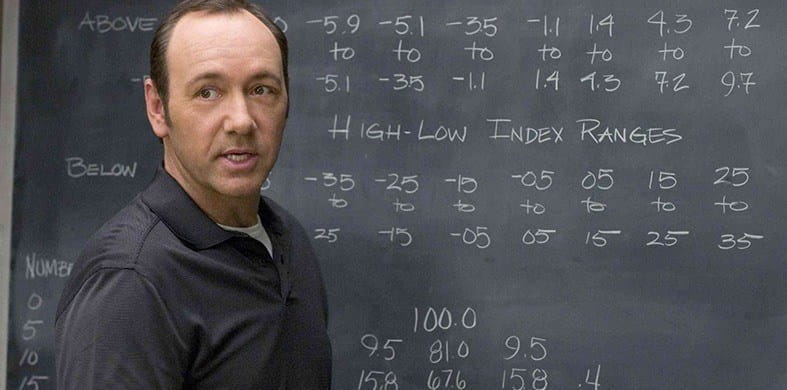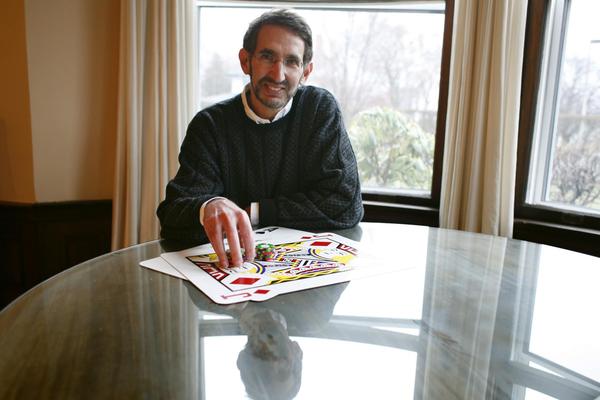Mit Professor Blackjack
Based on the books by Ben Mezrich that cover the legendary MIT Blackjack Teams.- Bringing Down the House'Describes a collection of math whizzes from M.I.T. The book follows the real characters and true story in only parts. Much of it is fiction. The movie, well, that’s all Hollywood schlock. The founder wasn’t an MIT professor, there wasn’t a love-story with the main characters, they didn’t play blackjack to get cash to go to medical school, and they weren’t all father-less, broke students.
January 21, 2020 Ken JohnsonIf you’re into gambling, especially card games such as poker and blackjack, chances are that you would have heard of the famous MIT blackjack team. It was a group of current and alumni MIT students that ravaged casinos across the strip in the last few decades of the 20th century. Our goal with this blog post is to share with you the true story of the most notorious group of card counters in the history of blackjack. To achieve complete authenticity, we have based this story on the personal testimonies and official statements of the people who were actually there.
But before we dive into the nitty-gritty of the article, we would like to take a few seconds and address the elephant in the room. As you probably know, card counting is not considered illegal, however, if you get caught doing it, you are most likely going to get banned. So, think twice before attempting to card counts, in case you to get inspired by the feats of the infamous MIT Blackjack Team.
The Original MIT Blackjack Team – How it All Started
Even though card counting has been around for a very long time, it was only in 1979 that the very first group of students formed, after being contacted by a professional blackjack player. What made it possible was the fact that in the very same year the New Jersey Control Commission passed a new regulation that forbade casinos in Atlantic City to ban the act of card counting. Instead, venues had to catch and ban players individually, which gave the MIT guys a little leeway to do their magic, before eventually being thrown out.

There were three individuals that can be considered as the founding fathers of the MIT blackjack team and they are J.P. Massar (Mr. ‘M’), John Chang and Bill Kaplan. As we are talking about gambling, it is only fitting that pure luck was what brought Massar and Kaplan together. While having dinner at a Chinese place in Cambridge, Mr M overheard a conversation about card counting, which happened to be between his future partners in crime. As the story goes, the three joined efforts to create and run the MIT blackjack team, which was operational from late 1979 all the way to the beginning of the 21st century.

Mit Professor Blackjack Rules
Card Counting – MIT Blackjack Team Strategy
As card counting was the main weapon in the hands of the MIT blackjack team, it is about time that we present you with a good explanation of how it actually works. It is a game strategy, that is mainly associated with playing blackjack and is used to determine whether the player is going to have an advantage over the house in each following hand. As there is luck involved, card counting does not guarantee a victory, but it can considerably lower the inherent house advantage. So much so that almost every casino in the world is either going to ban players that perform the stunt, or utilise multiple decks to make it impossible for them to keep track.
Mit Professor Blackjack Free
As you could expect, some serious mathematical skills are required, which means that a very small amount of players are ever going to be able to pull it off with consistent success. This is one of the main reasons why the infamous MIT blackjack team was formed and run by students and alumni from the Massachusetts Institute of Technology and other leading universities across the country. That being said, if you’d to give card counting a try, there are numerous books and online courses that promise to teach you. You are most likely not going to be good enough to trick the casinos, but you will definitely impress your mates the next time you play a friendly game of Blackjack. And the best part is that we have created a detailed guide to playing blackjack where you can find all the rules as well as the best blackjack casinos in the UK.
The Movie 21 – How Hollywood Made the MIT Blackjack Team Famous
At last, it is time to take a look at the movie 21, which popularised the MIT blackjack team and card counting as a whole. The plot revolves around the main character Ben Campbell(), who is recruited into the MIT blackjack team by his professor Micky Rosa, played by Kevin Spacey. The young man joins his fellow students and justifies his actions with the fact that he has no other way of paying his tuition debt of over $300,000. The six of them, led by their professor, head over to Las Vegas and start hitting one casino after another. As it often happens in real life, they hit some severe setbacks, that in turn lead to the end of the MIT blackjack team. And while 21 is not the best movie out there, if you are into the whole card counting thing, you should definitely watch it!
The Professor of Blackjack Dr. Edward O. Thorp
Dr. Edward O. Thorp is an American hedge fund manager who began his career as a professor of mathematics at MIT. In between those two endeavors he visited Las Vegas, played some blackjack, became enamored of the game’s continually changing house edge and wrote the most famous book on gambling ever which he titled Beat the Dealer.
The Professor of Blackjack was born in Chicago, Illinois August 14, 1932. His childhood did not reflect a future of gambling (at casino games or the stock market), but he was continually intrigued by the precision and definitive nature of mathematics and physics. His interests led to a BA in Physics from UCLA in 1953, an MA in Physics from UCLA in 1955 and finally a PhD in Mathematics from UCLA in 1958.
He was hired as a professor at MIT, but missed the West Coast and was fascinated by casino games and game theory, and took several vacations with friend Claude Shannon and Claude’s wife Betty. Not surprisingly, the numbers attached to a spinning roulette wheel were quite a draw, and he and Claude invented a small computer for advantage play at the game. Betty would wear the device and use his mathematical formula to try and take advantage of anomalies in the spin pattern of different dealers and wheels.
Along the way, Thorp’s overall forays into the casinos of Las Vegas were successful. However, the mathematics of blackjack was also alluring to Thorp and he learned Fortran so he could program equations into a huge IBM 704 computer to define a specific strategy based on game theory related to the changing nature of the odds due to cards put into play. He was influenced by a paper presented by fellow mathematician Roger Baldwin on the same subject in 1956, but wanted to take his ideas to a new level. His new overall theory was related to the Kelly criterion, a wagering system he later applied to the stock market that matched bet-size to player advantage.
With his initial research finished, Thorp wrote a paper he titled A Favorable Strategy for Twenty-One in November of 1960. His fellow MIT professor, Dr. Shannon, suggested a name change to Fortune’s Formula: A Winning Strategy for Blackjack. The name stuck. The paper suggested that there was a specific way to play each hand of blackjack, based on the dealer’s up card – a basic strategy for winning. He also theorized a system to determine when the house odds changed and became player odds (or an actual player advantage).

Hitting the Casinos
His theories were so masterful that Thorp convinced Manny Kimmel, a local professional gambler, to provide him with a $10,000 bankroll to prove his system could be both practical and successful in real casino action. Instead of playing in Las Vegas, Thorp started in the casinos of Reno and Lake Tahoe where he initially won enough to convince Kimmel this might be a goldmine.
Repeated trips to both Reno and Las Vegas were filled with the good and bad of gambling. Unfortunately, even with a 1% edge there are huge swings at blackjack and Thorp had many ups and downs, but an $11,000 win over a single weekend was enough to keep him playing. And, it kept Pit Bosses watching him very carefully.
Before Thorp and the advent of basic strategy, most players were at a much larger disadvantage to the house, probably closer to 5%. To have a player who seemed to be so much better at the game was unnerving for the casinos, and they had no problem just telling him he couldn’t play anymore. He pondered his future while moving to New Mexico where he was a professor of mathematics from 1961 to 1965.
Thorp refined his strategy and detailed his Las Vegas casino exploits and explained the use of a mathematical card counting system in his book, Beat the Dealer. It was only marginally successful until a series of magazine and newspaper articles detailed the story of the college professor with a winning formula for playing blackjack and beating the casinos.
Las Vegas, in typical knee-jerk reaction to the thought of losing any money, changed the rules of the game to make it harder for the coming wave of skilled players they were sure was coming. Those rules included: no splitting of aces, shuffling the deck early, and restricting double down hands.
The public hated the rule changes, and even though Thorp’s book became a National Best Seller, it turned-out that very few players had the ability, patience, or bankroll to implement Thorp’s card counting system. In fact, after the casinos relented and eased-up on the rule changes, tens of thousands of new blackjack players did indeed come to Las Vegas, Reno and Lake Tahoe to try their luck. Most lost.
System Revised and the Real Boom in Blackjack Play
Thorp, however, continued to win, but found he was often shuffled-up or asked to leave, so he took to playing in disguise. With the help of Julian Braun, an easier count system was developed and included in the 1966 updated and revised edition of Beat the Dealer. Every subsequent blackjack book and system is based on the initial work of Thorp and Braun
Thorp continued to play casino blackjack after moving to the University of California at Irvine where he also taught mathematics from 1965 to 1982. He also contributed articles and ideas to a growing group of professional blackjack players and blackjack teams. However, his main focus outside the university was a growing interest in the stock market.
His first hedge fund, the market neutral Princeton/Newport Partners was started in 1969 with partner Jay Regan. Thirty years later Thorp reported that his own personal investments using his system of exploiting pricing anomalies in the securities markets as well as quantitate finance with stocks had yielded a 20% annual rate of return.
Dr. Thorp has written several books on his theories for beating the stock market using what were then new ideas, with names like Option Arbitrage, Convertible Arbitrage, Index Arbitrage and Statistical Arbitrage.
Mit Professor Blackjack Meaning
Without the book Beat the Dealer and Thorp’s Simple Point-Count System and Complete Point-Count System, upcoming blackjack players like Lawrence Revere and Kenny Uston would never have achieved the success and notoriety they did – by beating the casinos, and publishing their own books.